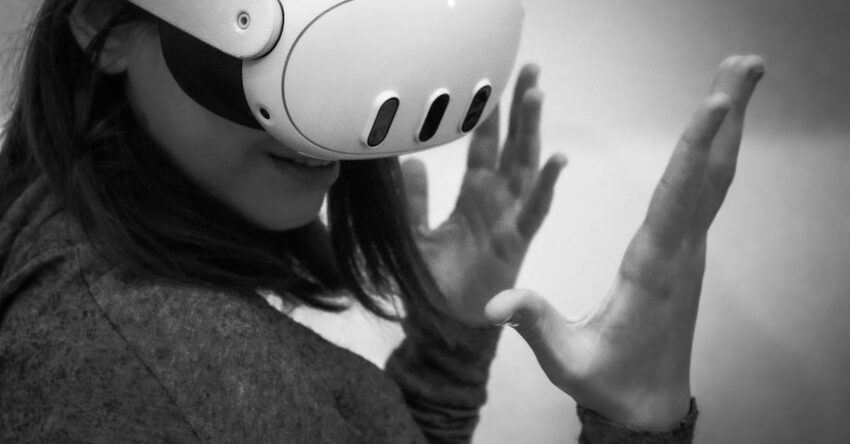Have you ever wondered how virtual reality law is transforming the legal landscape? I find it fascinating how virtual reality applications are not only used for fun but are now becoming crucial in courtrooms. This emerging field combines law and technology, creating a world where digital evidence and virtual simulations can be pivotal in legal cases. It’s no longer just about physical evidence; as VR legal cases grow, they bring both challenges and opportunities to explore how we understand justice.
Imagine stepping into a courtroom where an immersive experience audience watches as virtual reality replaces traditional methods. Sensory information systems are now storing evidence that judges and juries can “see” during a session to hear a case. It sounds like science fiction, doesn’t it? Yet, this is our reality. VR in courtroom settings raises significant questions about legal ethical challenges and the mental health impact on participants. How do we address these issues? The implications of using VR technology in law are immense and deeply intriguing.
Join me as we dive into this exciting world where law meets immersive technology. By understanding these virtual spaces, you can grasp the important implications for justice today. Let’s explore how this fascinating blend of law and technology shapes our future. Are you ready to uncover the secrets of mastering virtual reality law in no time? Let’s get started!

Photo provided by Alessia Lorenzi on Pexels
Inside the story
Understanding Virtual Reality Law
The Role of Legal Technology
As I look deeper into virtual reality law, I notice that legal technology shapes how lawyers and judges approach cases involving virtual worlds. Legal tech offers tools that help interpret and argue cases more effectively. It enables us to see how virtual actions can carry real-world consequences. When I think about the future, I see technology continuing to play a big role in law. Lawyers need to understand these technologies to stay relevant and effective. I wonder if you’ll agree that being tech-savvy is now essential for those in the legal profession?
Impact of VR in Courtrooms
When I imagine stepping into a courtroom, I picture a judge using VR in courtrooms to transform how evidence is presented. VR can recreate crime scenes, allowing juries to experience events from different perspectives. This could make it easier for jurors to visualize complex scenarios. I believe this technology makes legal proceedings more engaging and potentially fairer. The idea of using VR might seem futuristic, but it’s happening today. I wonder if you’ll find it as fascinating as I do, seeing how virtual reality enhances justice?
Virtual Reality Applications in Legal Cases
I’ve observed that many VR legal cases leverage immersive experiences to provide new insights. For example, lawyers use VR to simulate environments to better understand incidents. This immersive technology helps in reconstructing accidents or crime scenes accurately, providing evidence that can be critical in trials. I find it intriguing how VR can change the landscape of legal evidence. Could this be the future of courtroom evidence? I think it might be, and I’m excited to see how it evolves.

Key Concepts and Applications
Using Virtual Simulations and Digital Evidence
When I explore virtual simulations, I see them as tools that provide digital evidence in complex cases. These simulations can make abstract ideas more concrete for juries and judges. They are especially helpful in cases where visualizing the sequence of events is crucial. I often think about how this digital evidence is changing traditional methods. With these tools, I believe that cases can be presented more clearly and efficiently. Have you seen any examples where virtual simulations made a significant impact in a legal case?
Augmented Reality Law Insights
In my journey to understand augmented reality law, I have come across unique challenges that offer unique challenges to legal professionals. These challenges arise from blending virtual elements with the physical world. Laws are still catching up with how to address these issues properly. I sometimes wonder about the legal implications when virtual objects interact with real-life situations. This area of law is complex but incredibly fascinating. What do you think about how augmented reality might change our understanding of ownership or privacy?
Law and Technology Integration
As I continue to learn, I see that the integration of law and technology is crucial for the future. It allows us to address new legal issues that arise from digital interactions. This integration helps professionals navigate the boundaries of traditional laws and modern innovations. I believe that the legal field must embrace technology to remain relevant. People in law need to be open to learning about these changes to better serve justice. How do you feel about the pace at which technology is affecting the legal landscape?
Wrapping Up Your Journey in Tech Law
In this exciting world of tech law, I find that embracing the challenges and opportunities presented by immersive technology can truly broaden your horizons. From virtual simulations to digital evidence, the landscape offers endless possibilities for legal applications that can impact your practice significantly. Mastering these tools empowers you to deal confidently with legal challenges and become an integral part of the justice system’s future.
Start by immersing yourself in online courses or workshops focused on this dynamic field. Acquaint yourself with the latest tools and case studies involving augmented reality and virtual simulations. Engage with communities or forums where you can exchange insights and stay informed about new developments in interactive experiences. These steps will keep you at the forefront of tech law innovation.
Now, I encourage you to dive right in. Explore tech law with an open mind and a curious spirit. Your journey starts with a single step, so make that move today. Embrace the changes and opportunities, and watch your legal expertise flourish!
